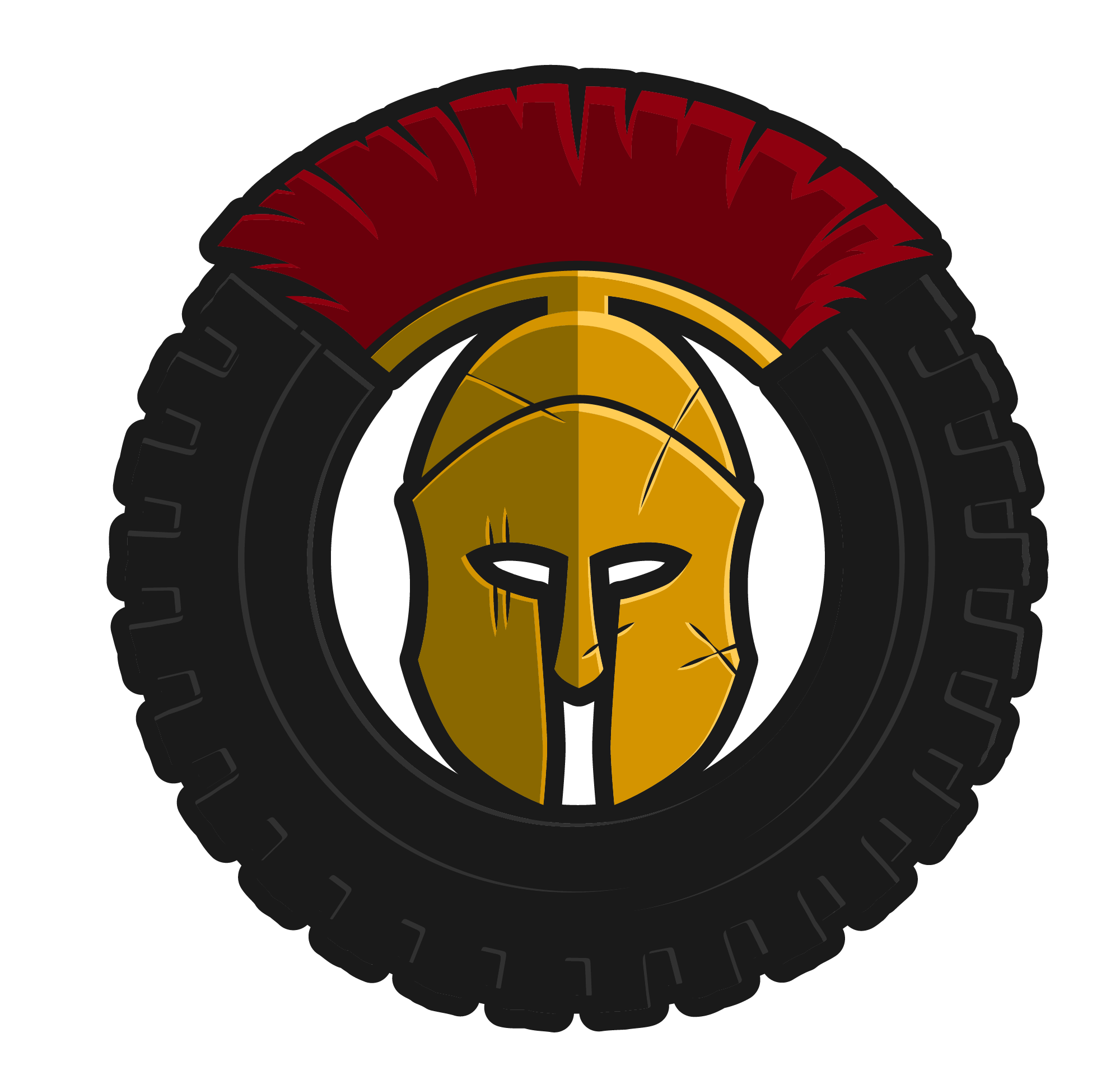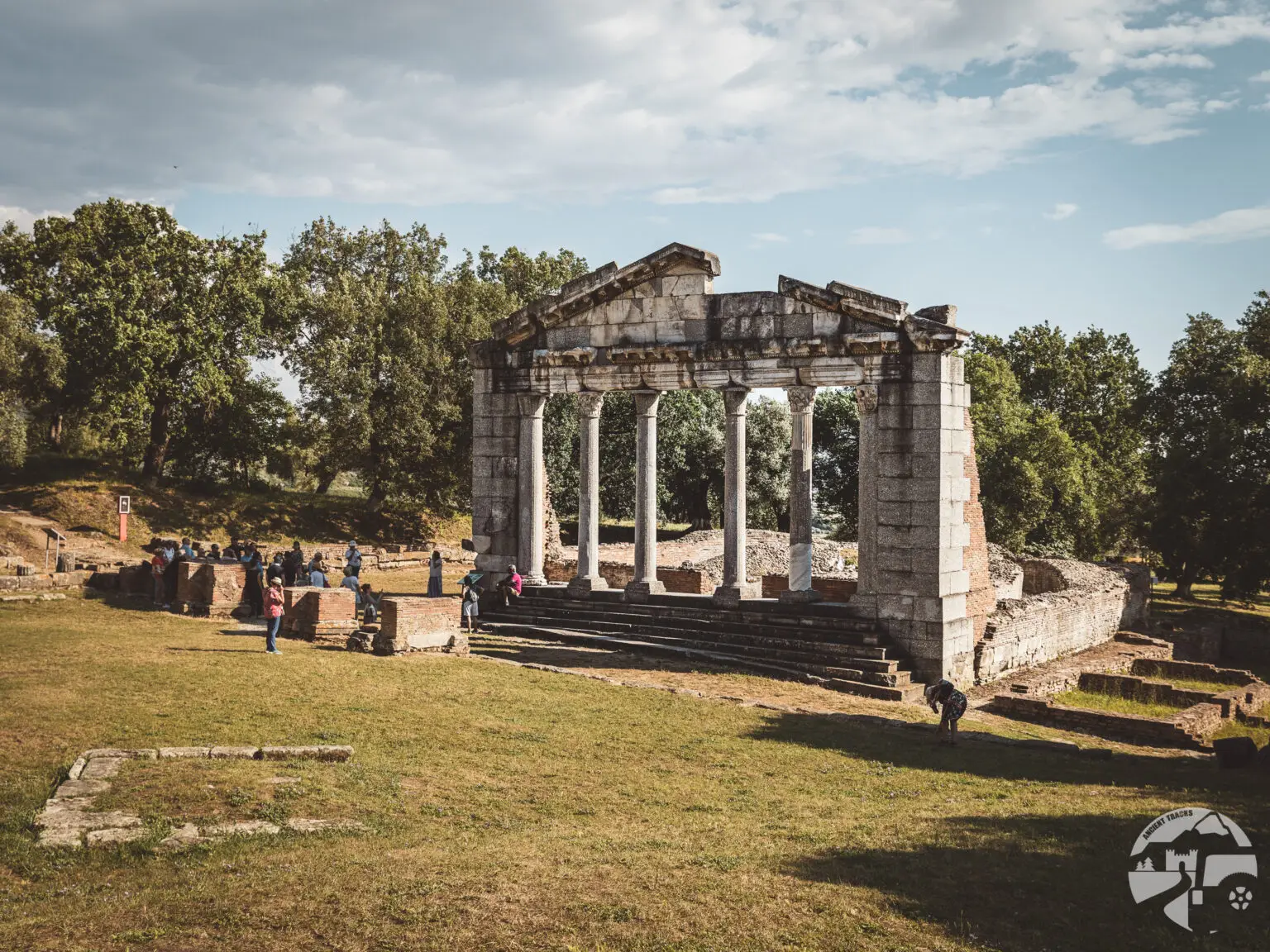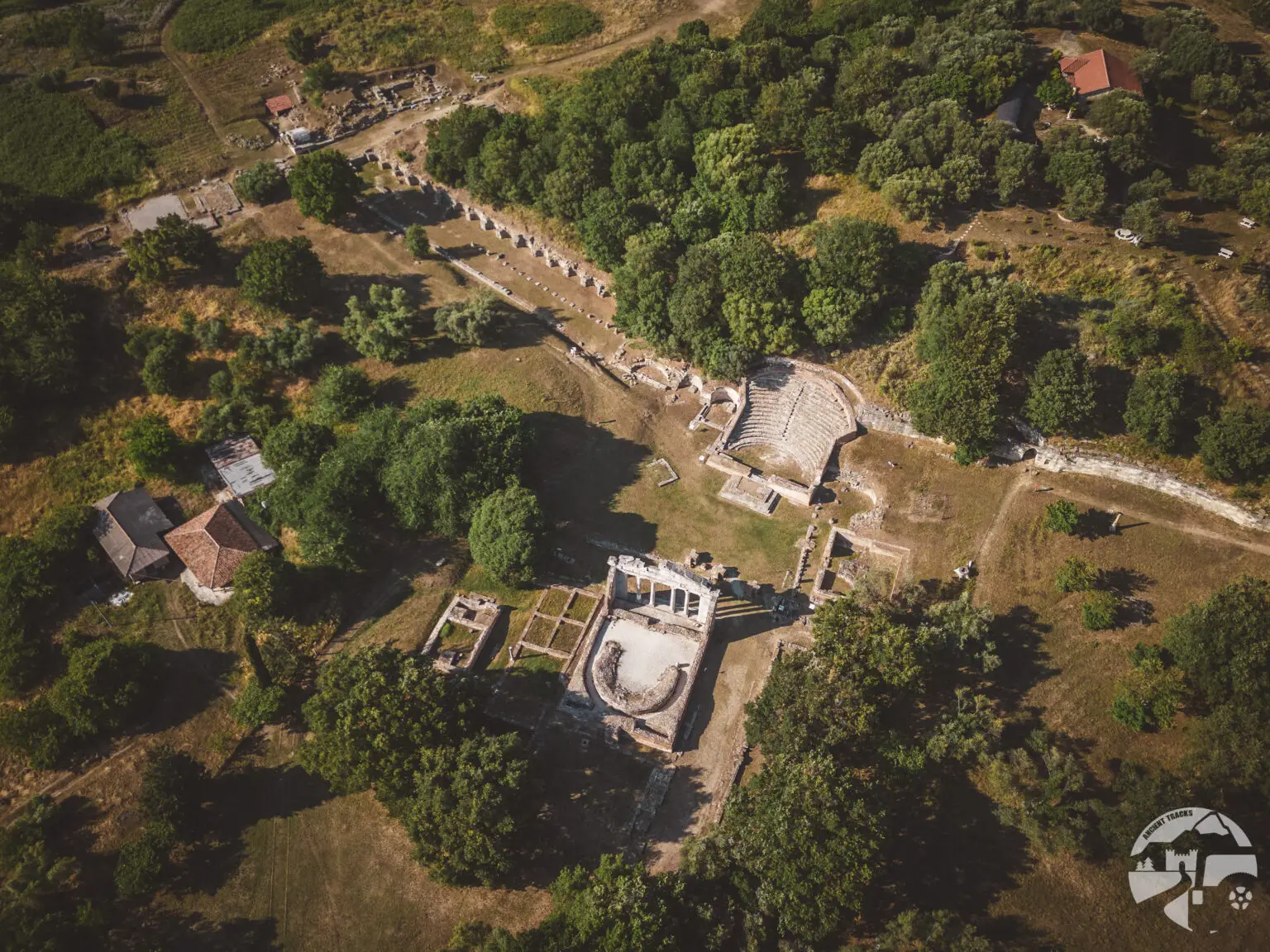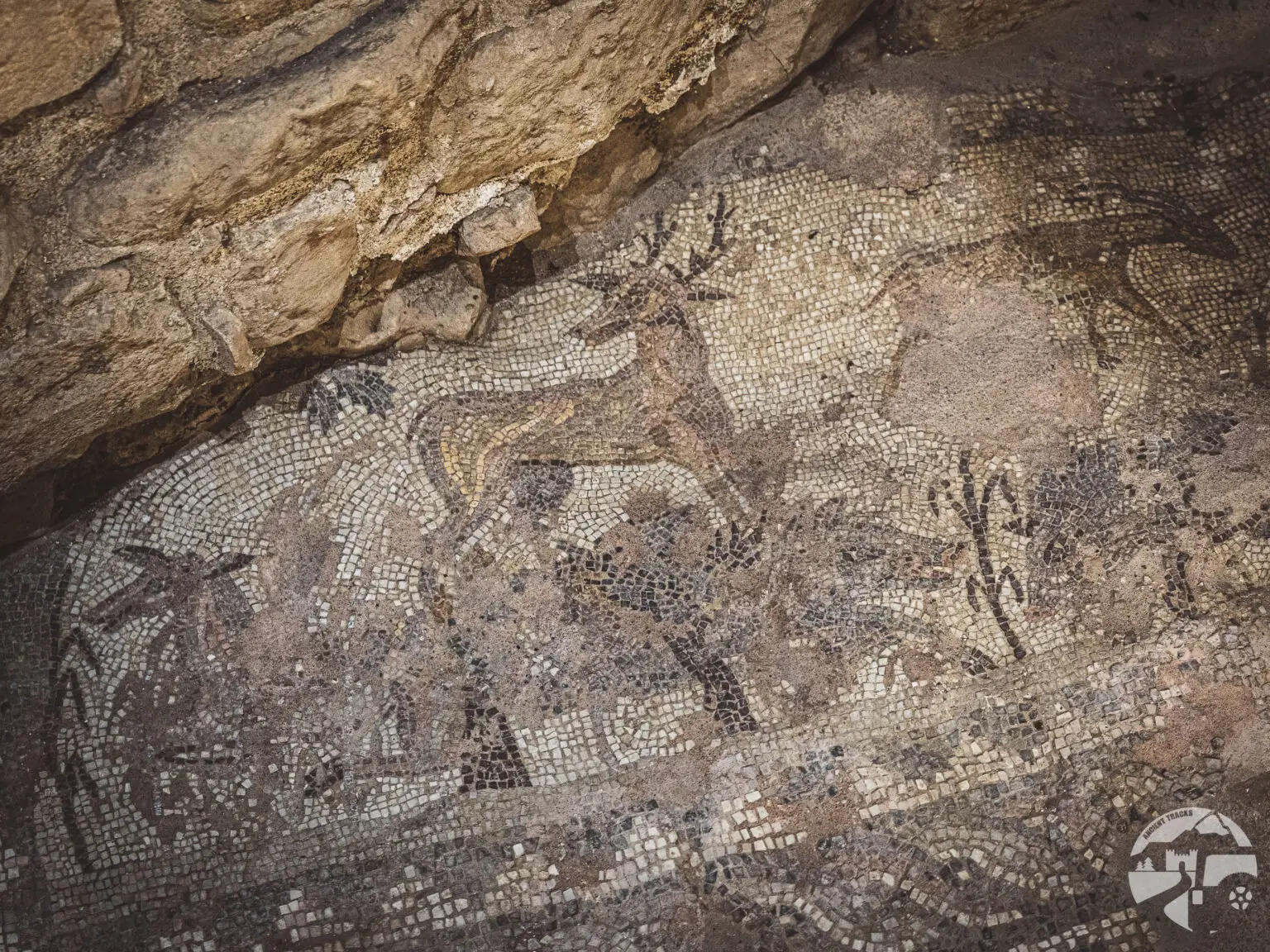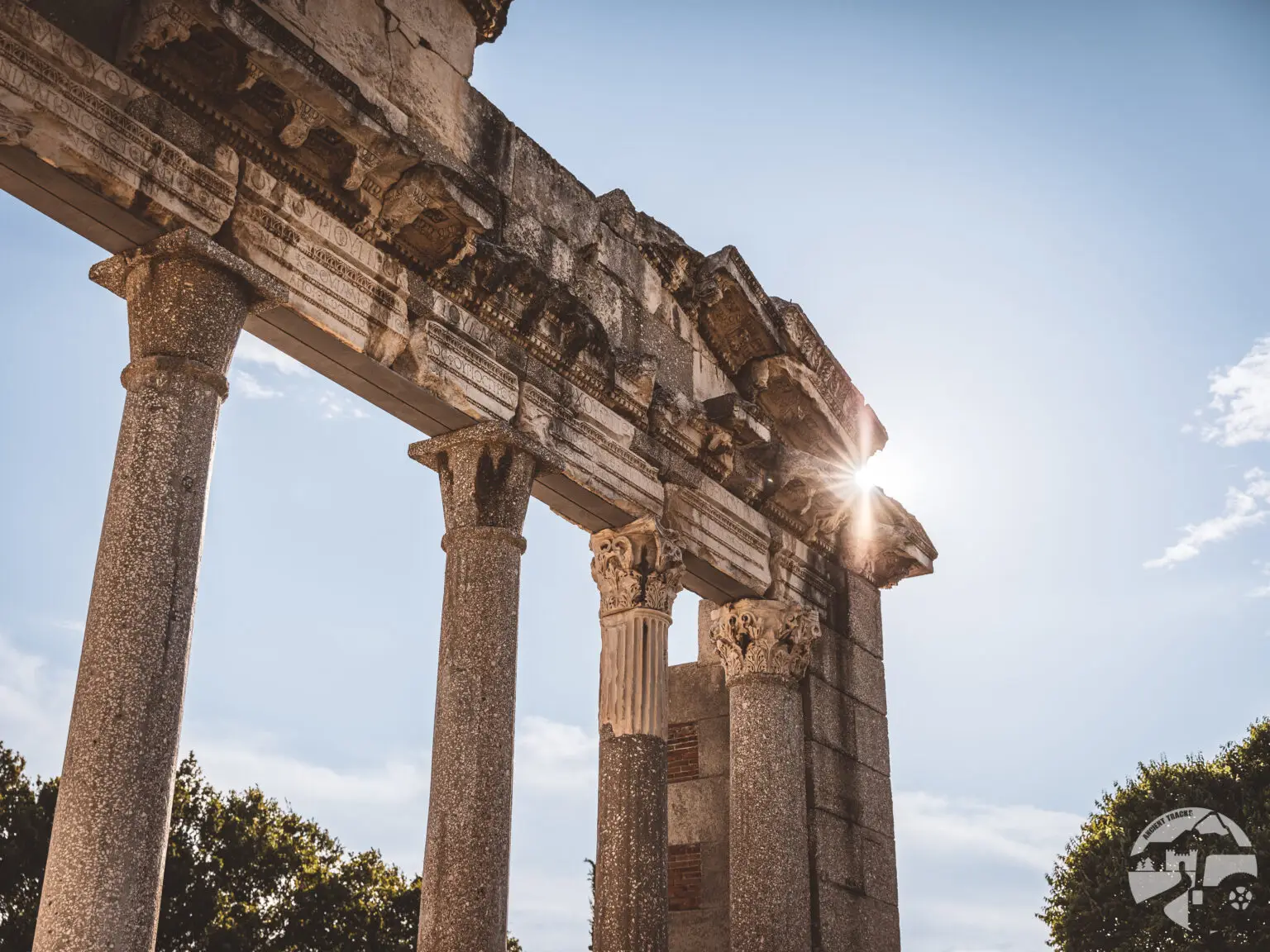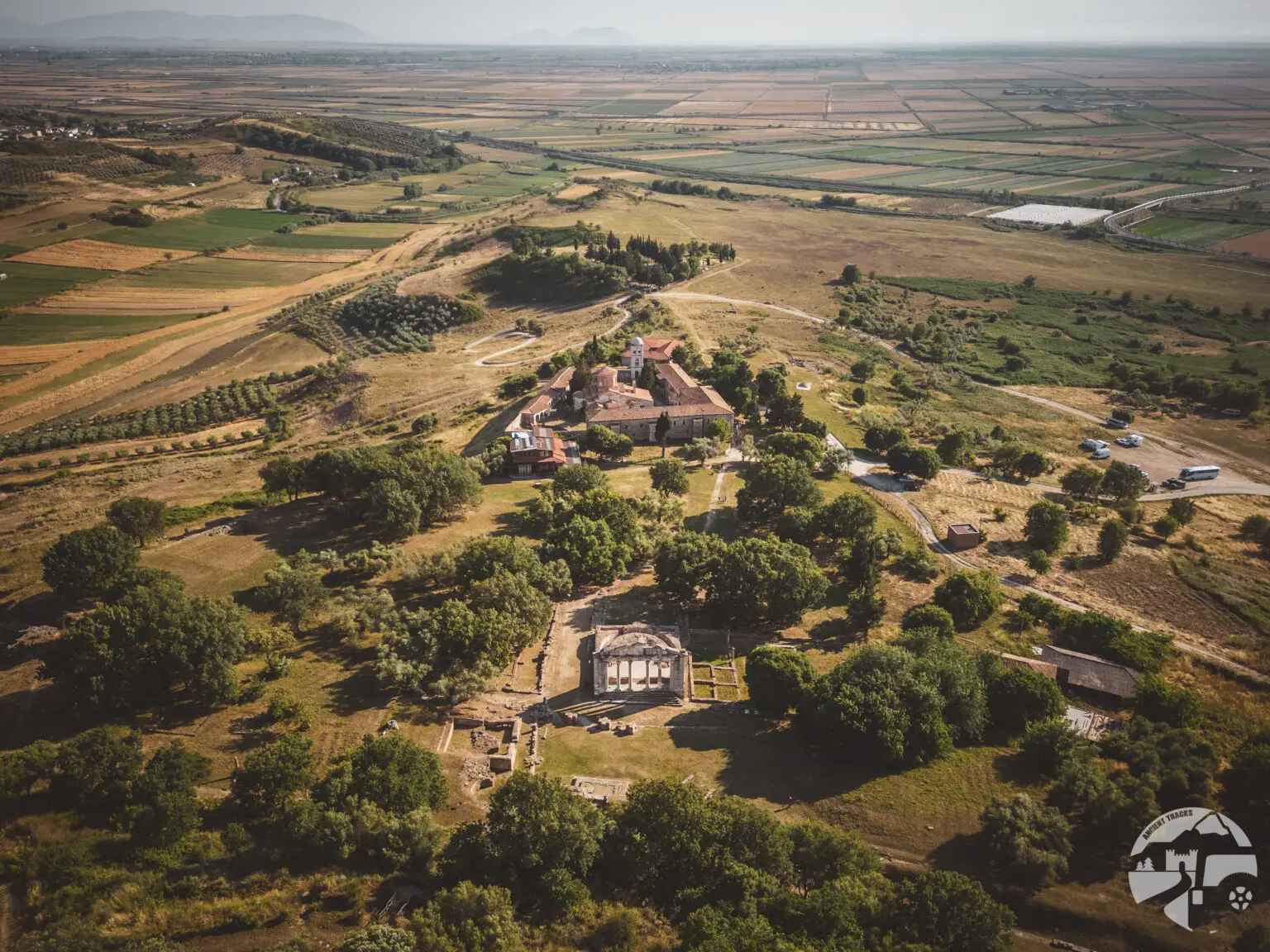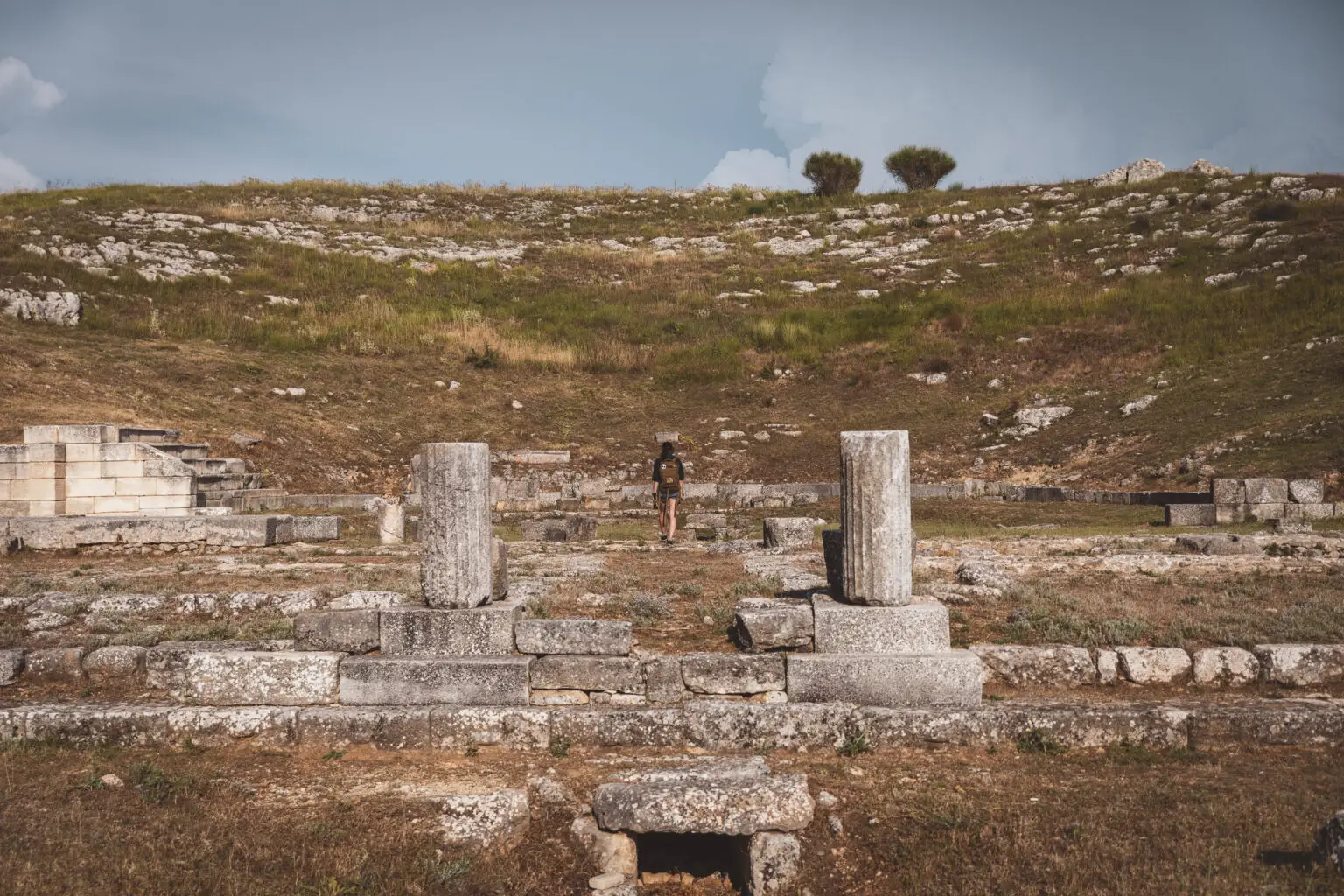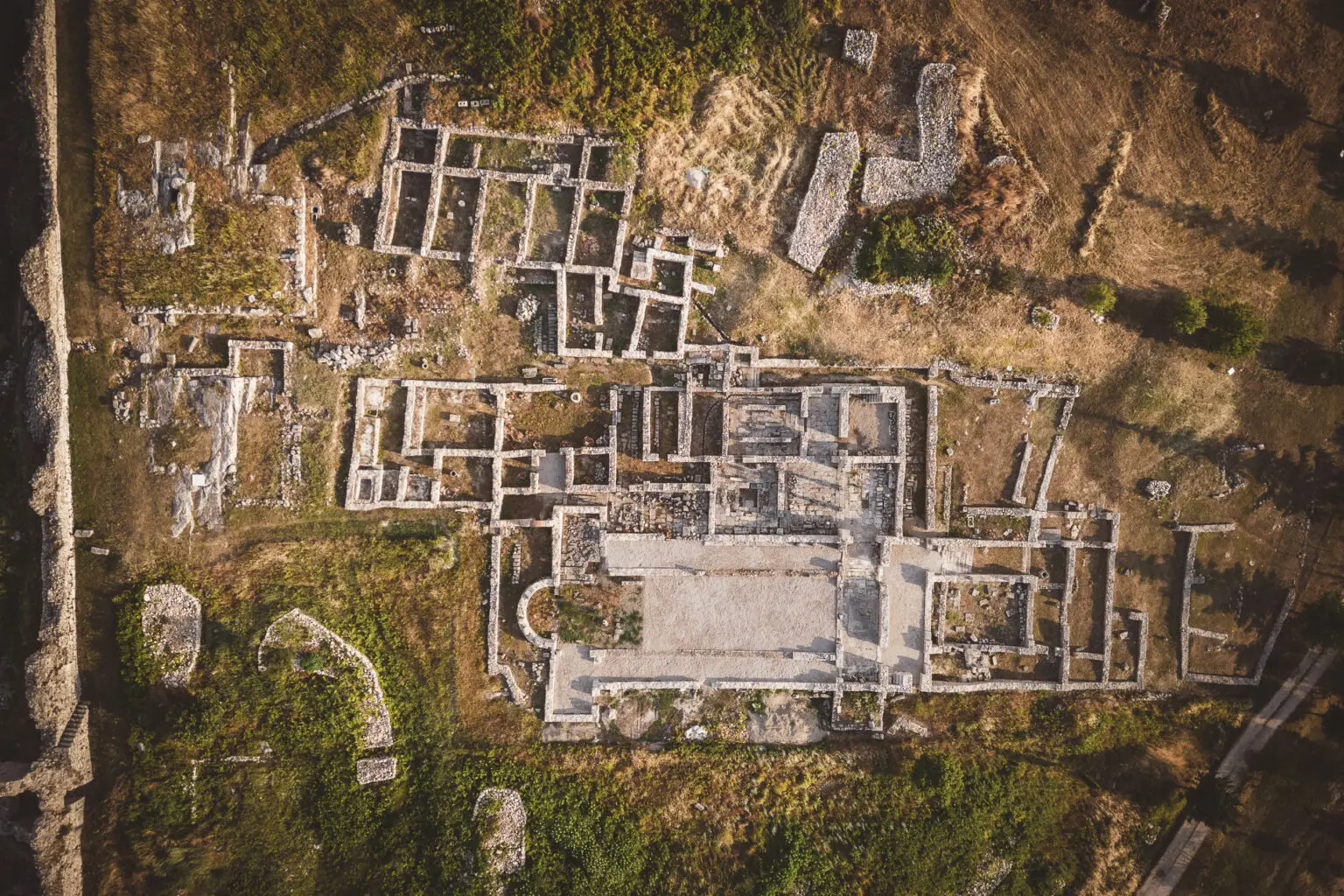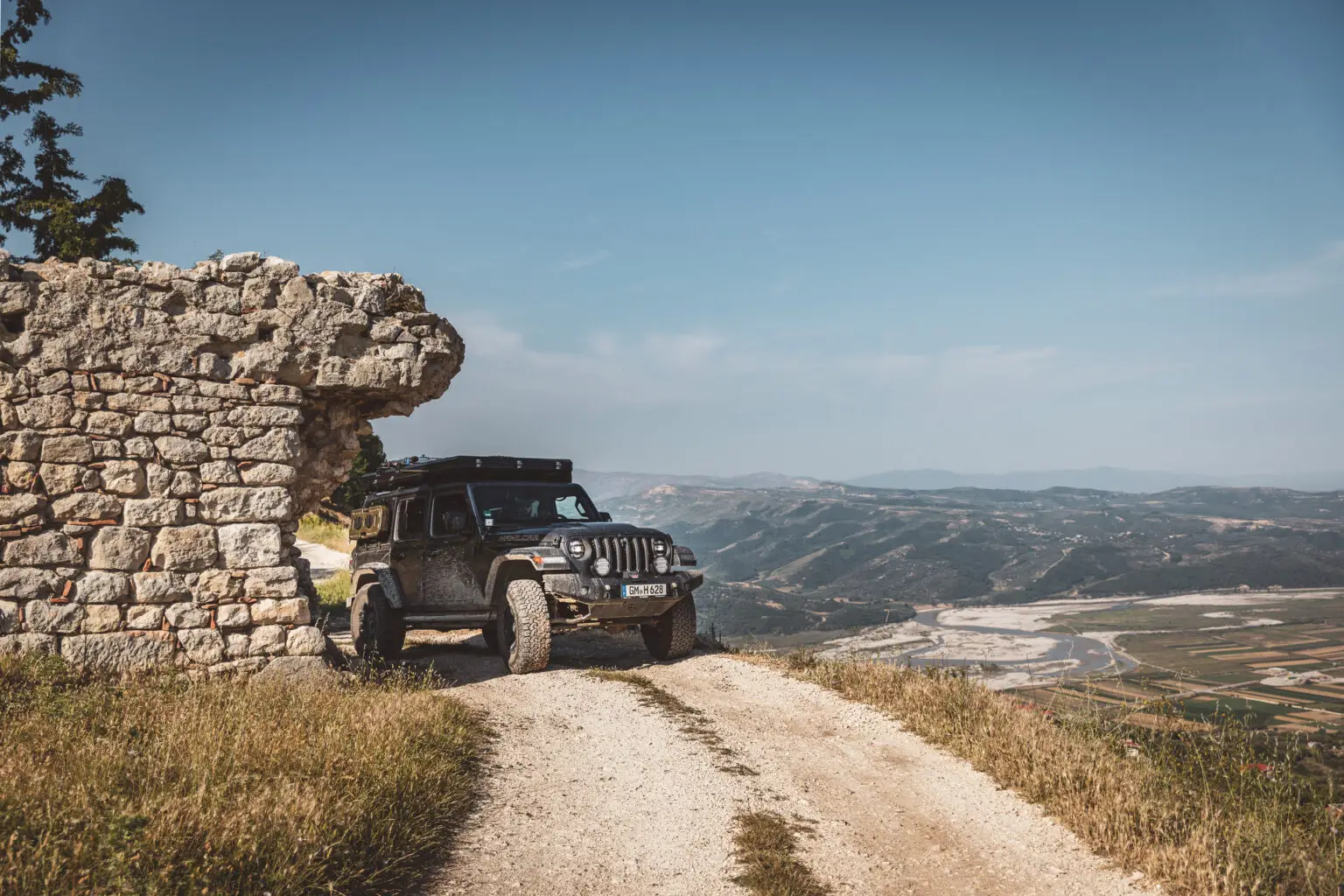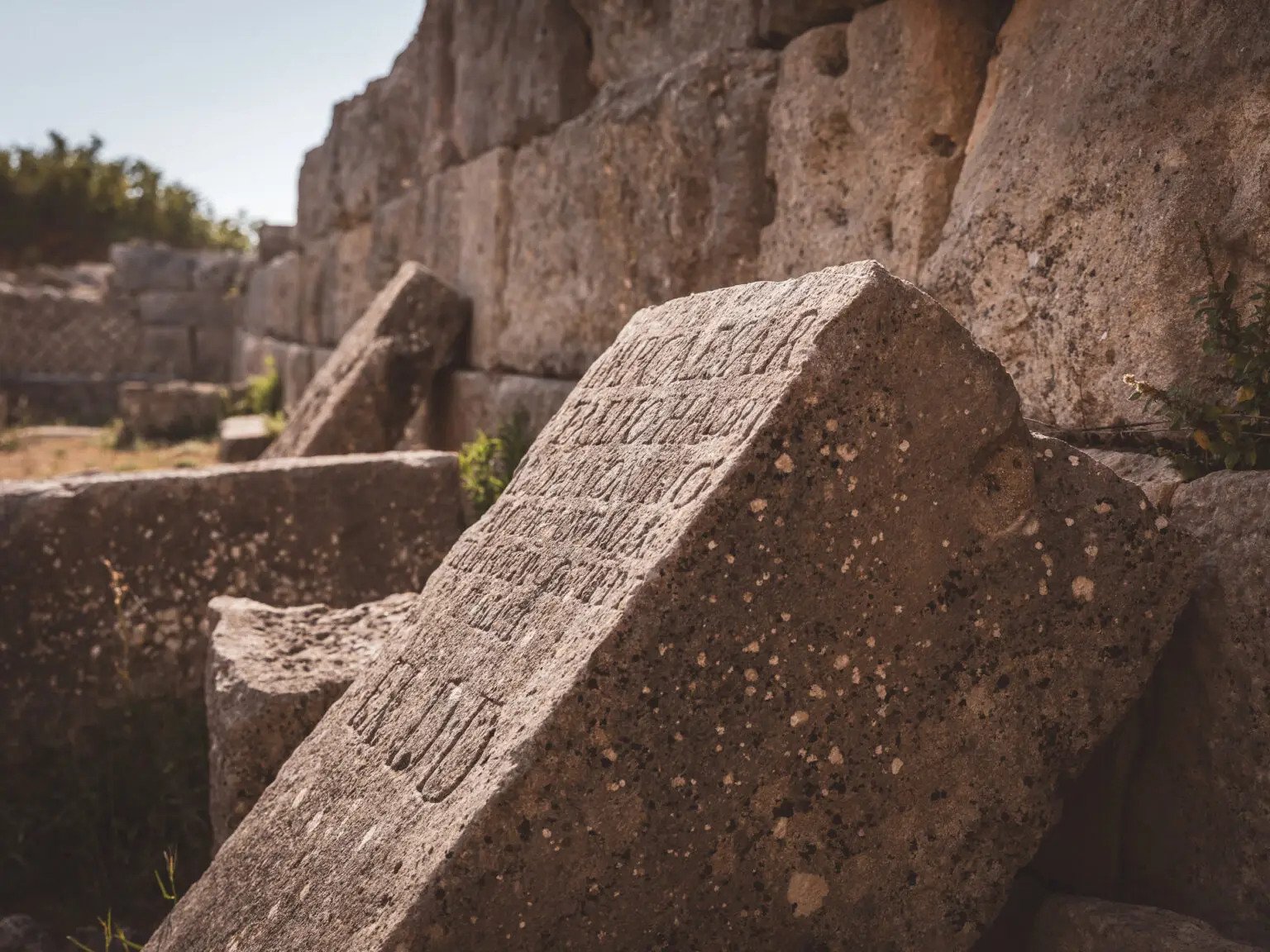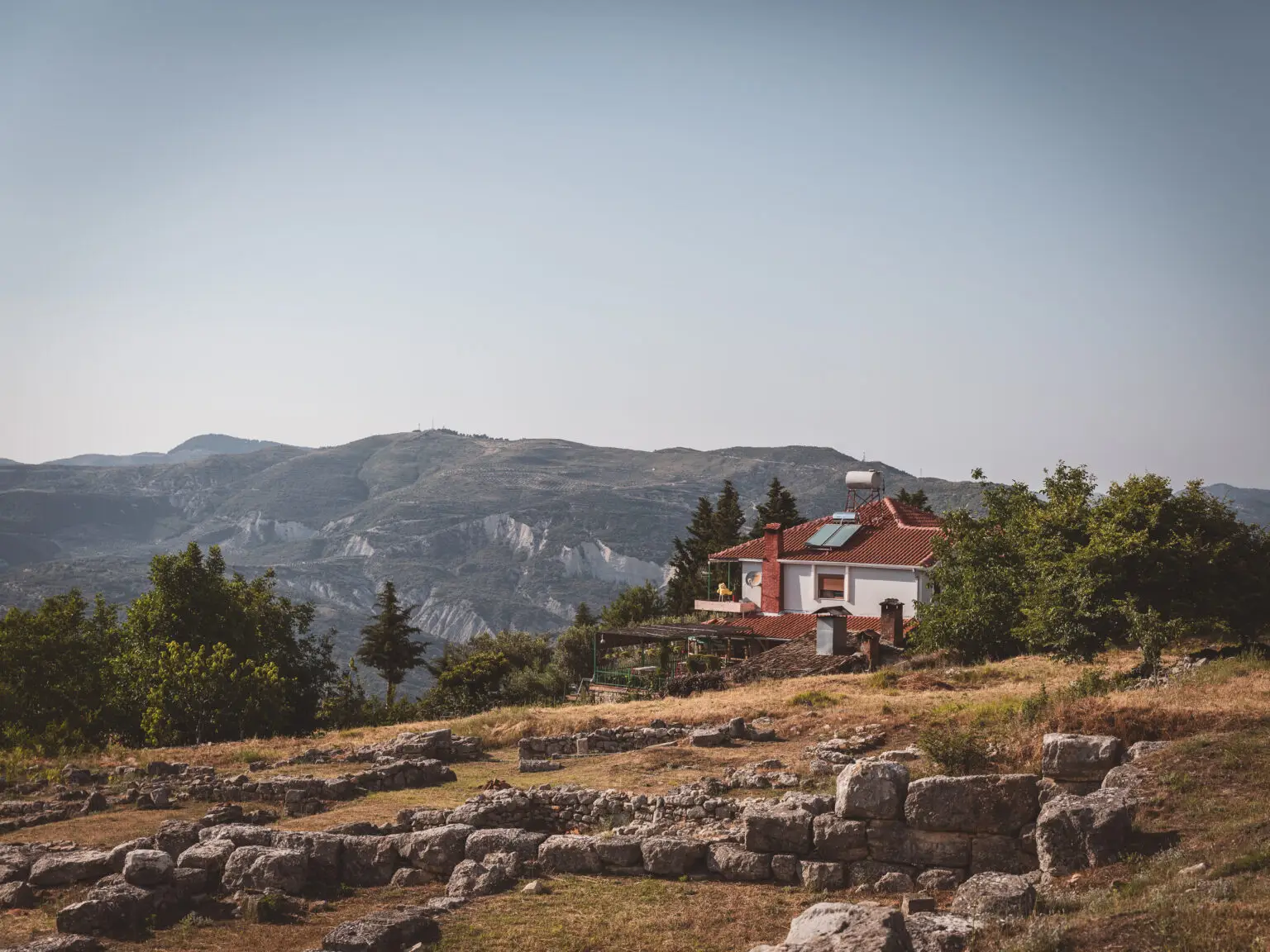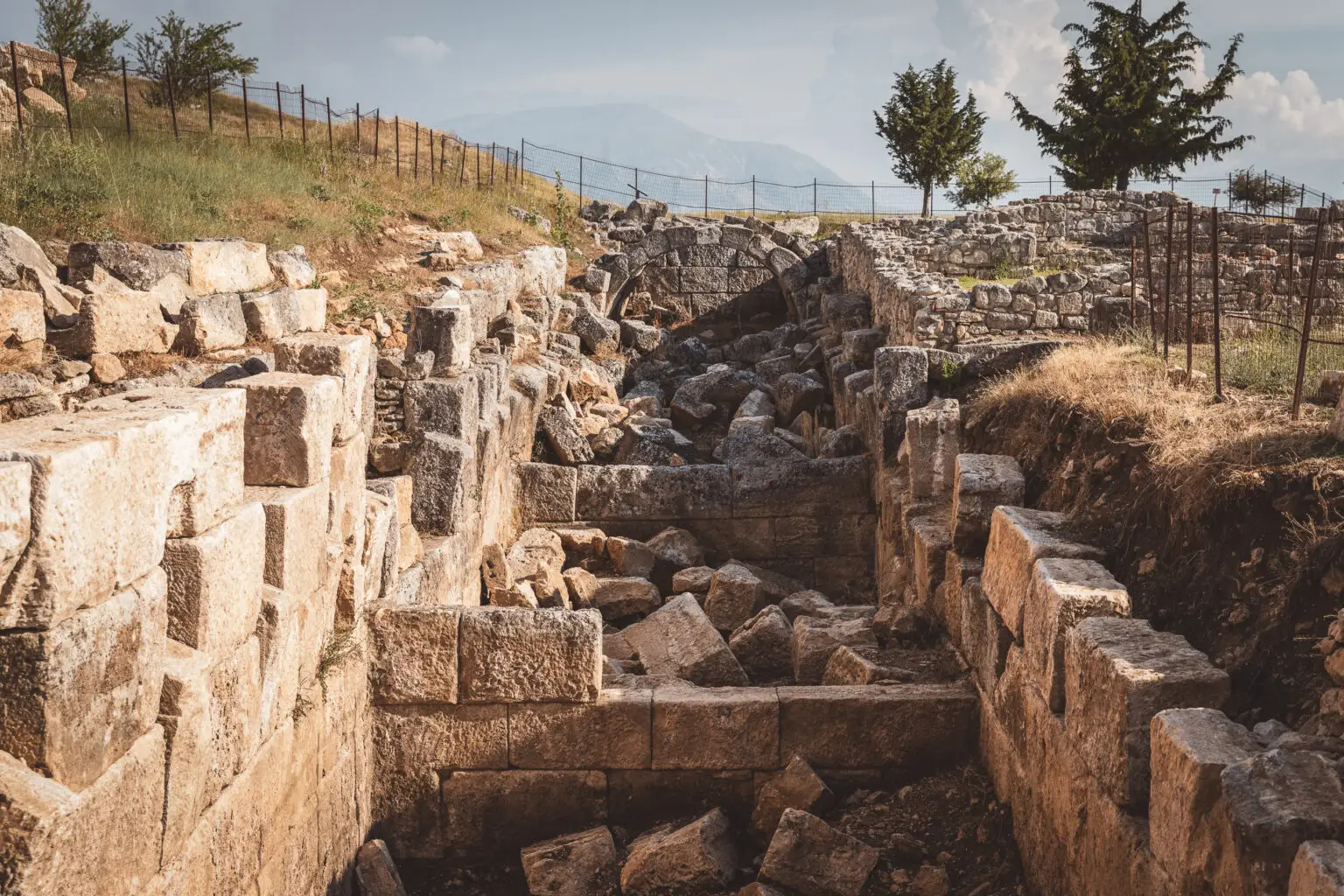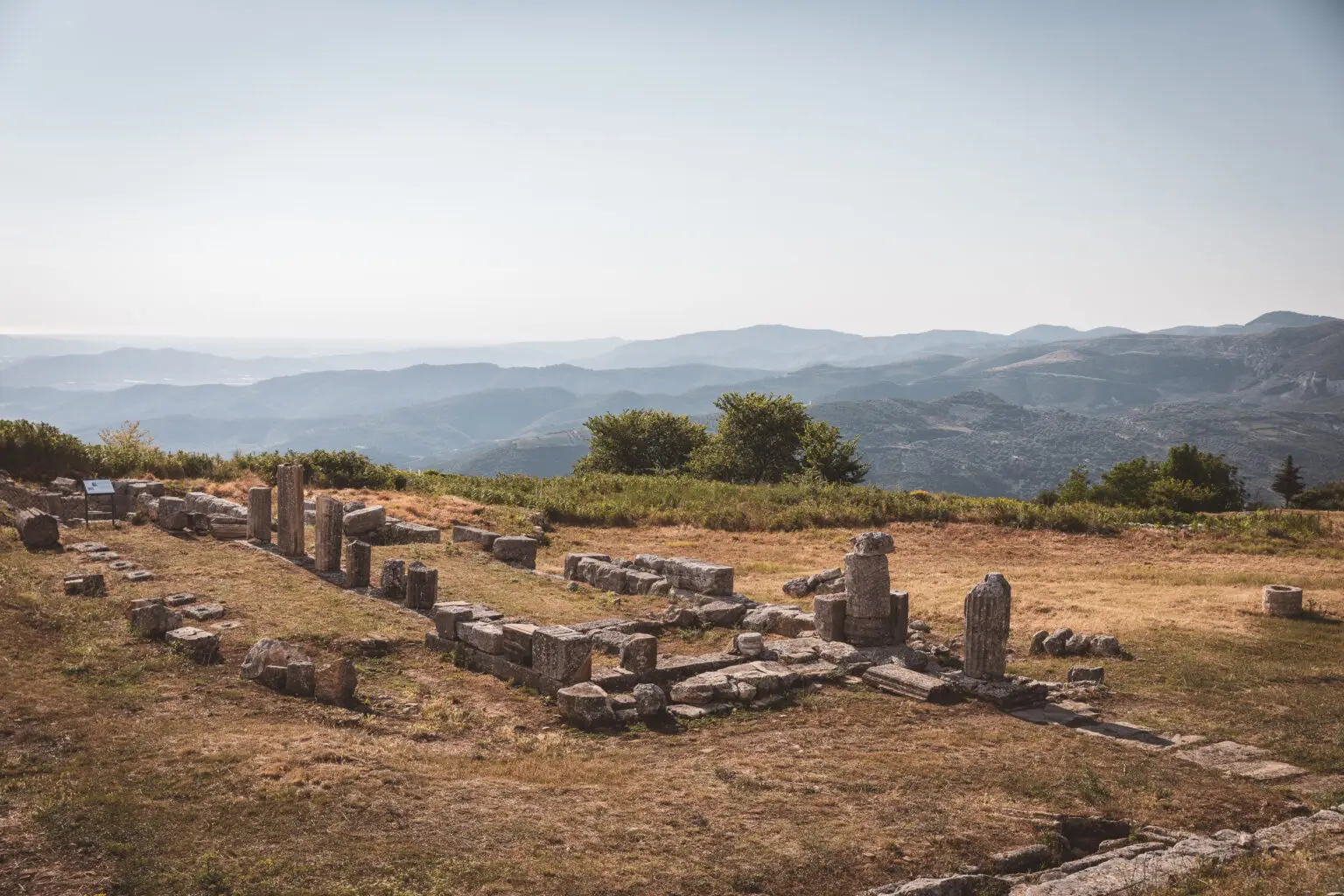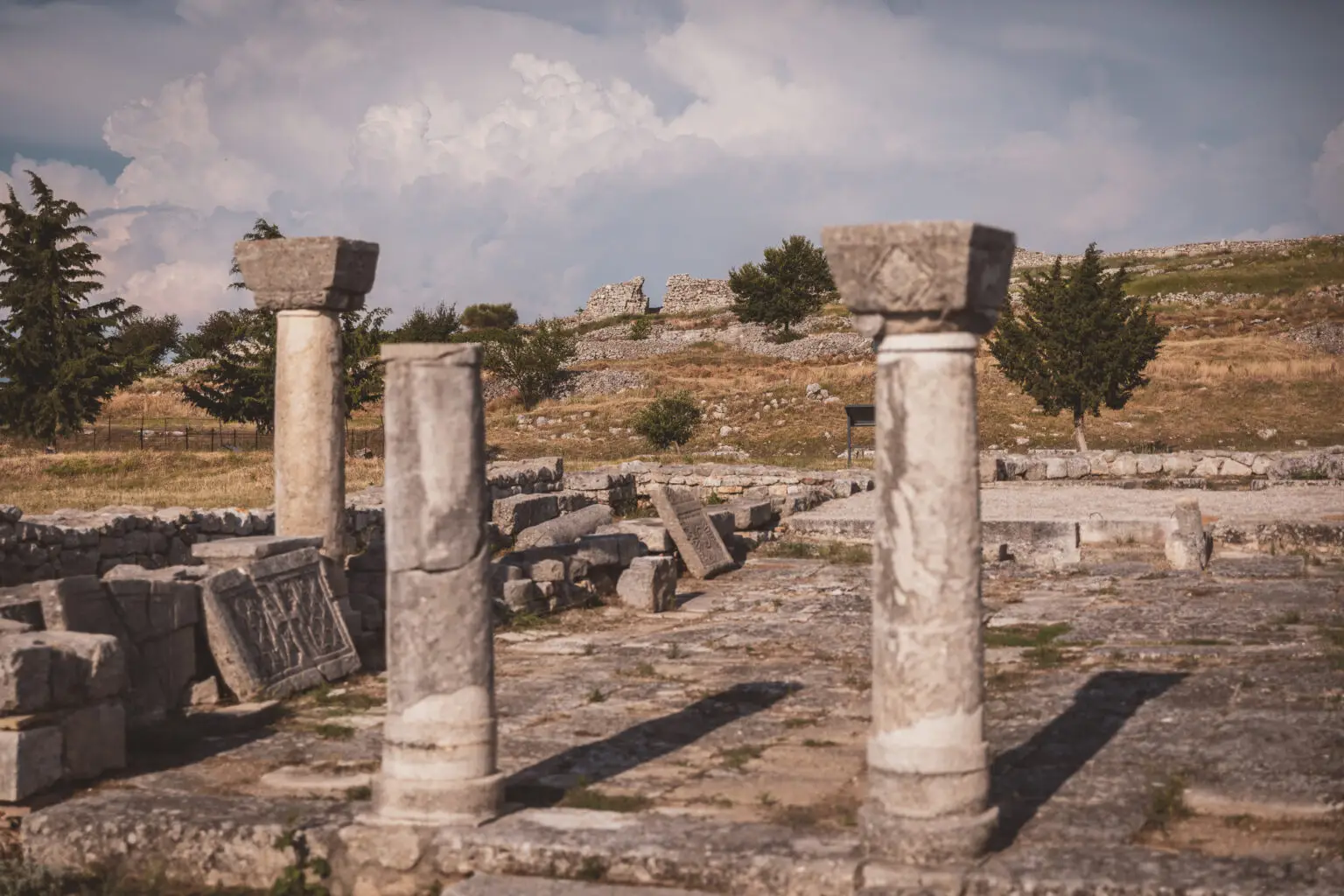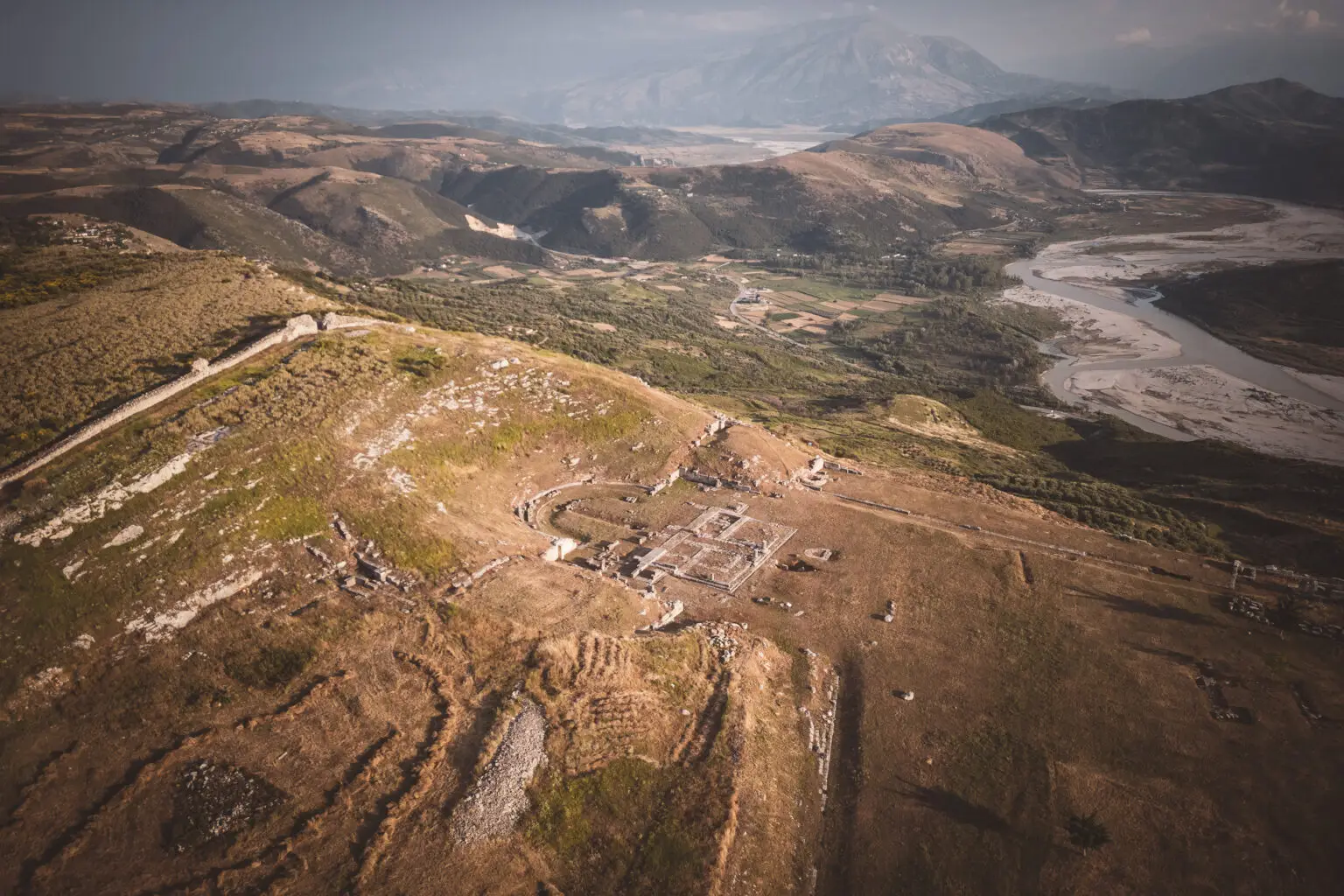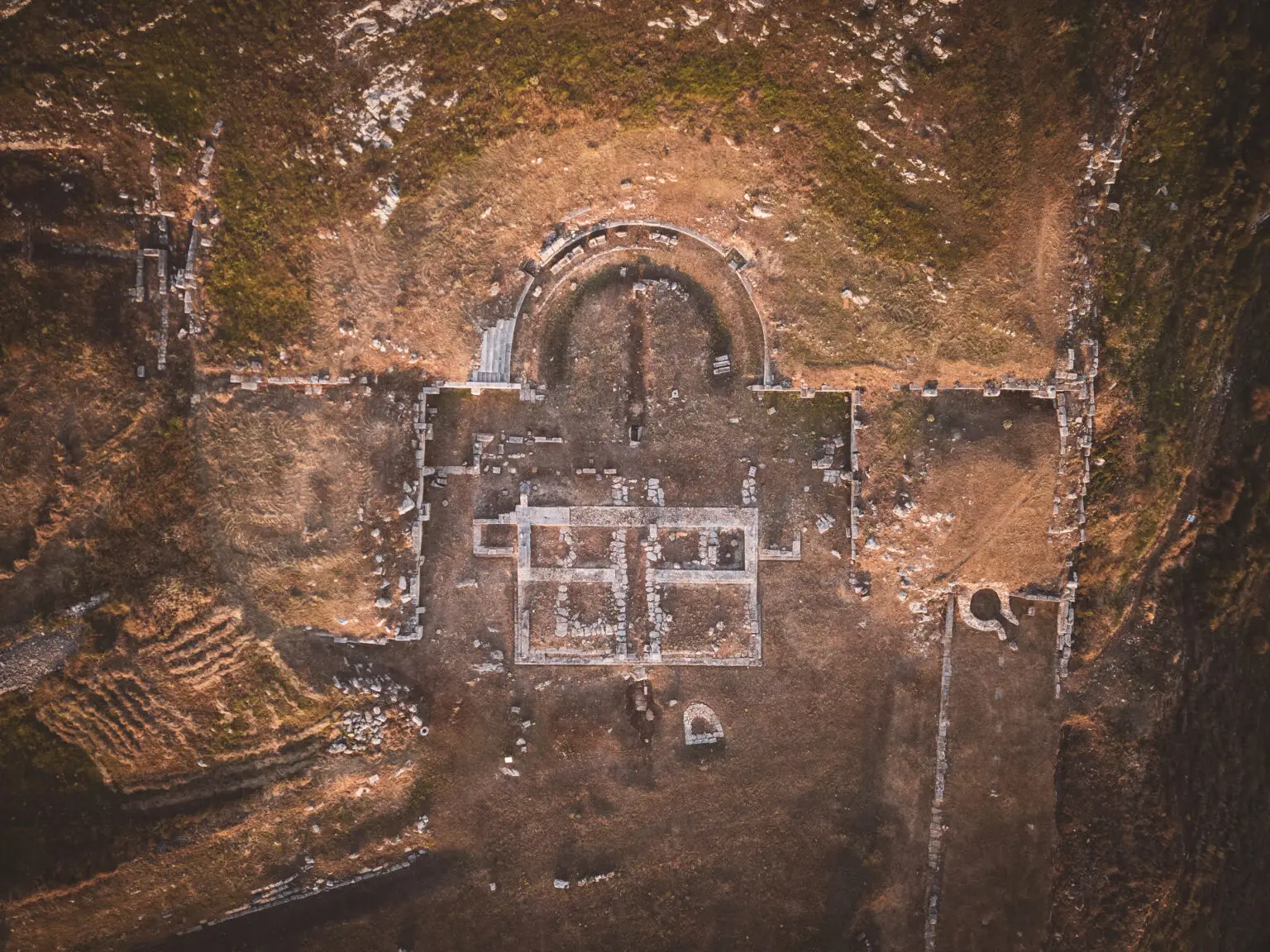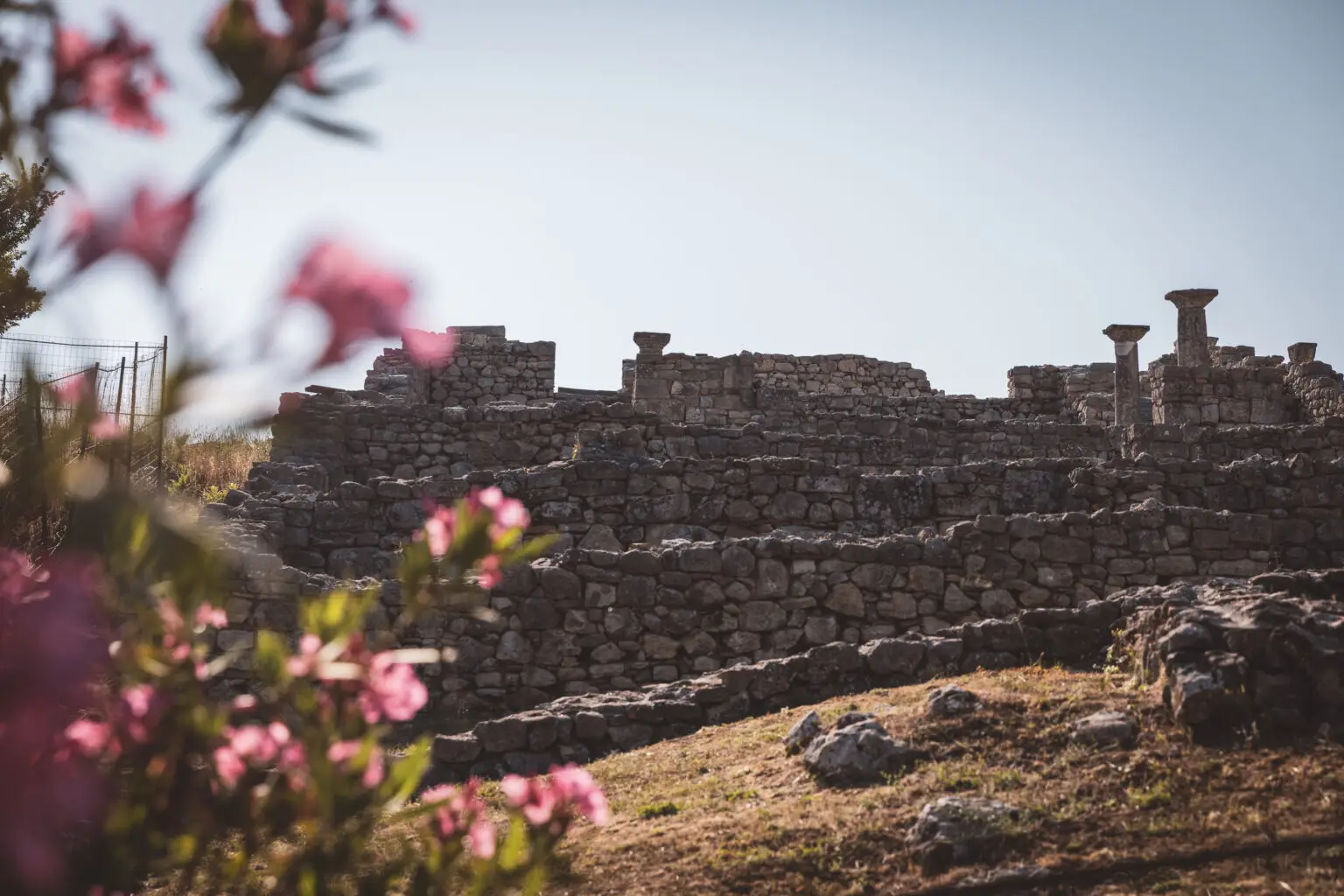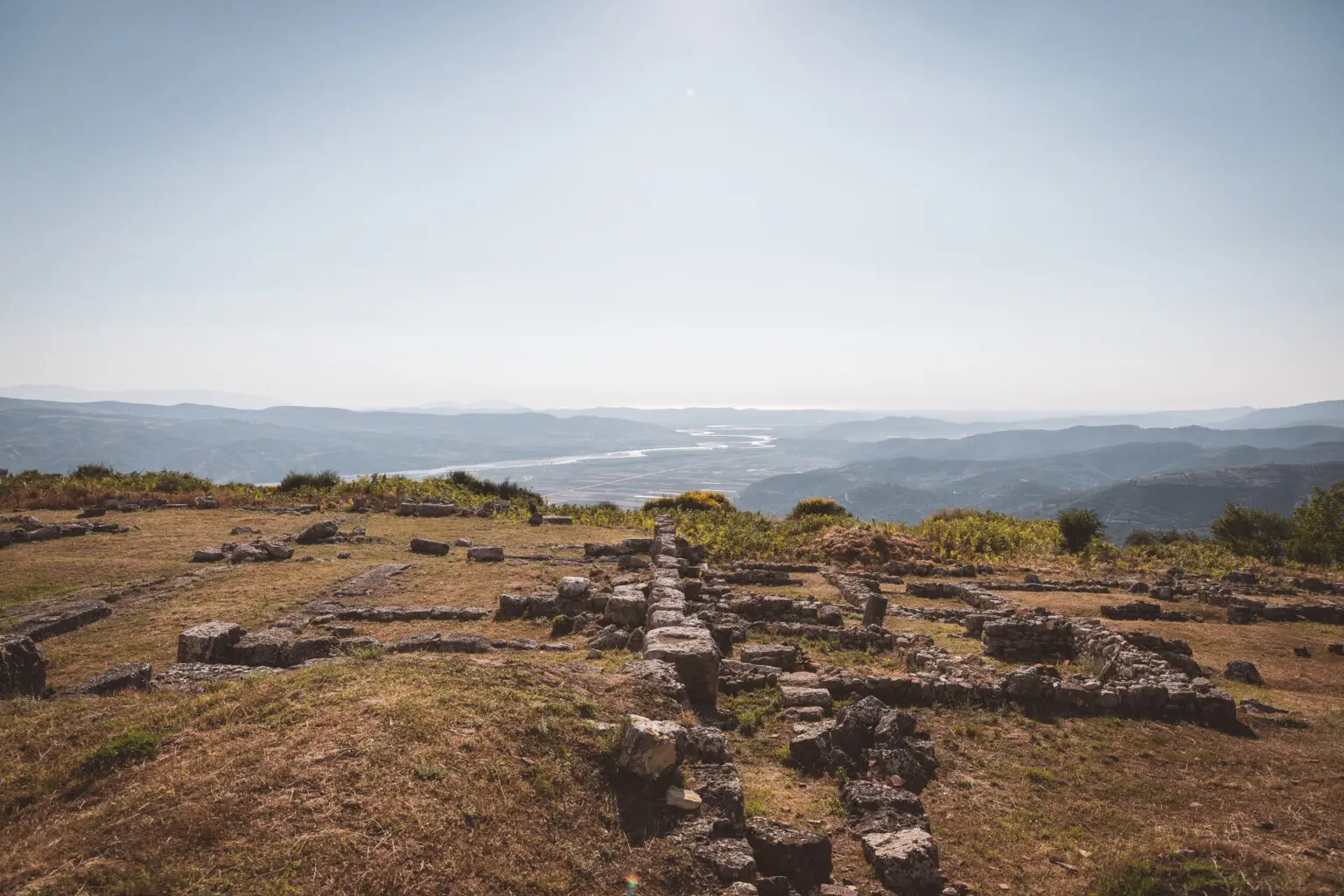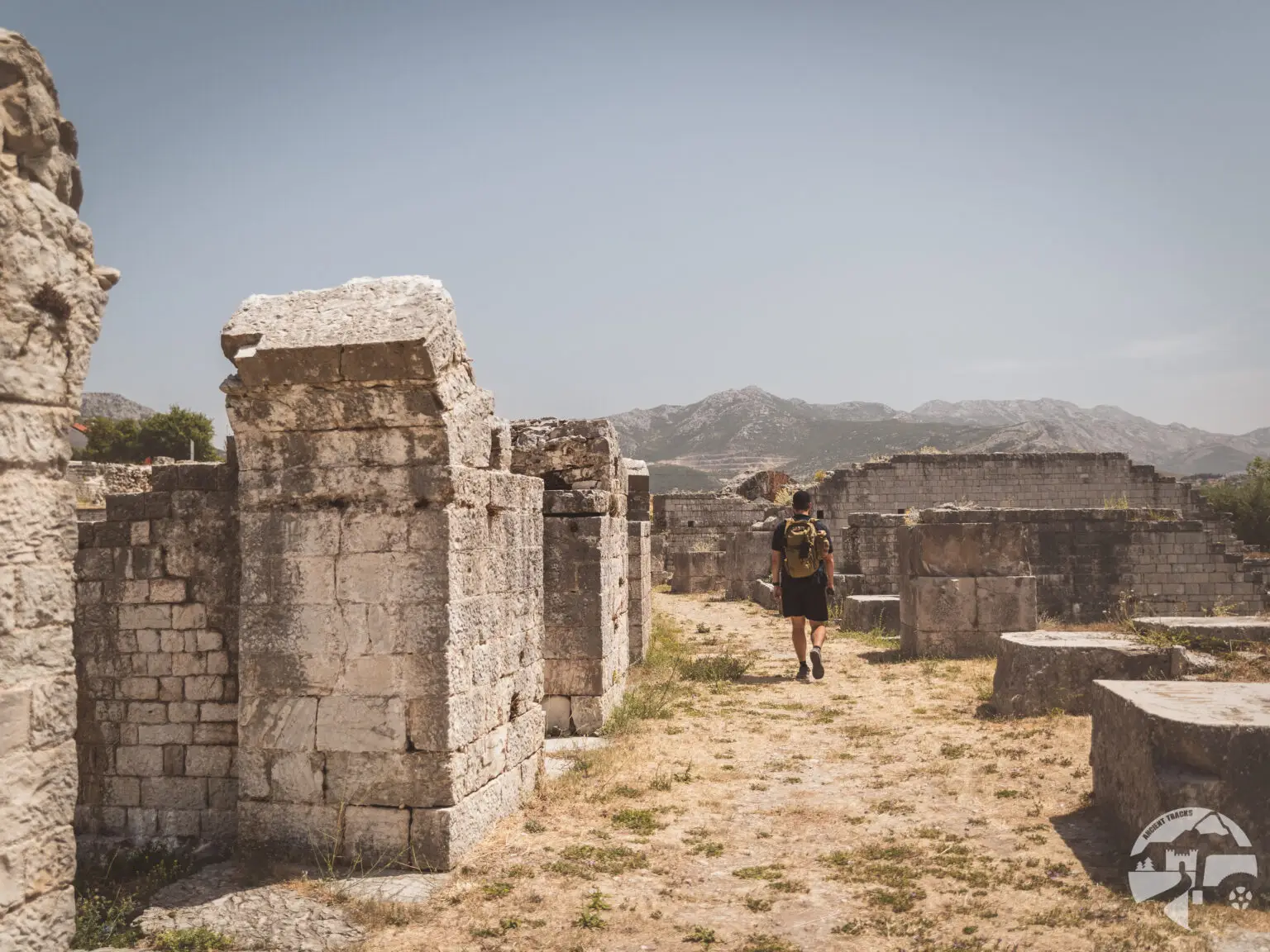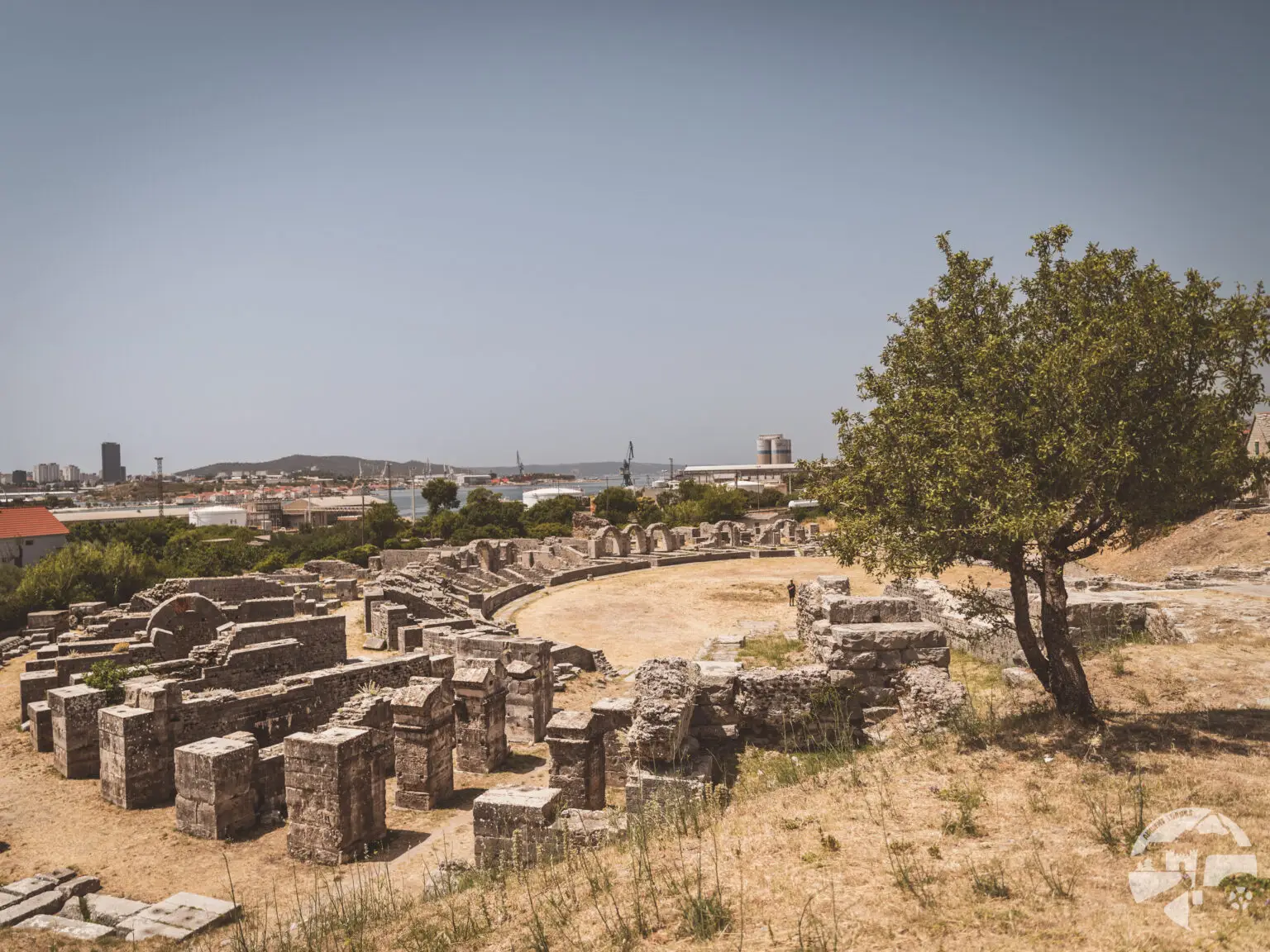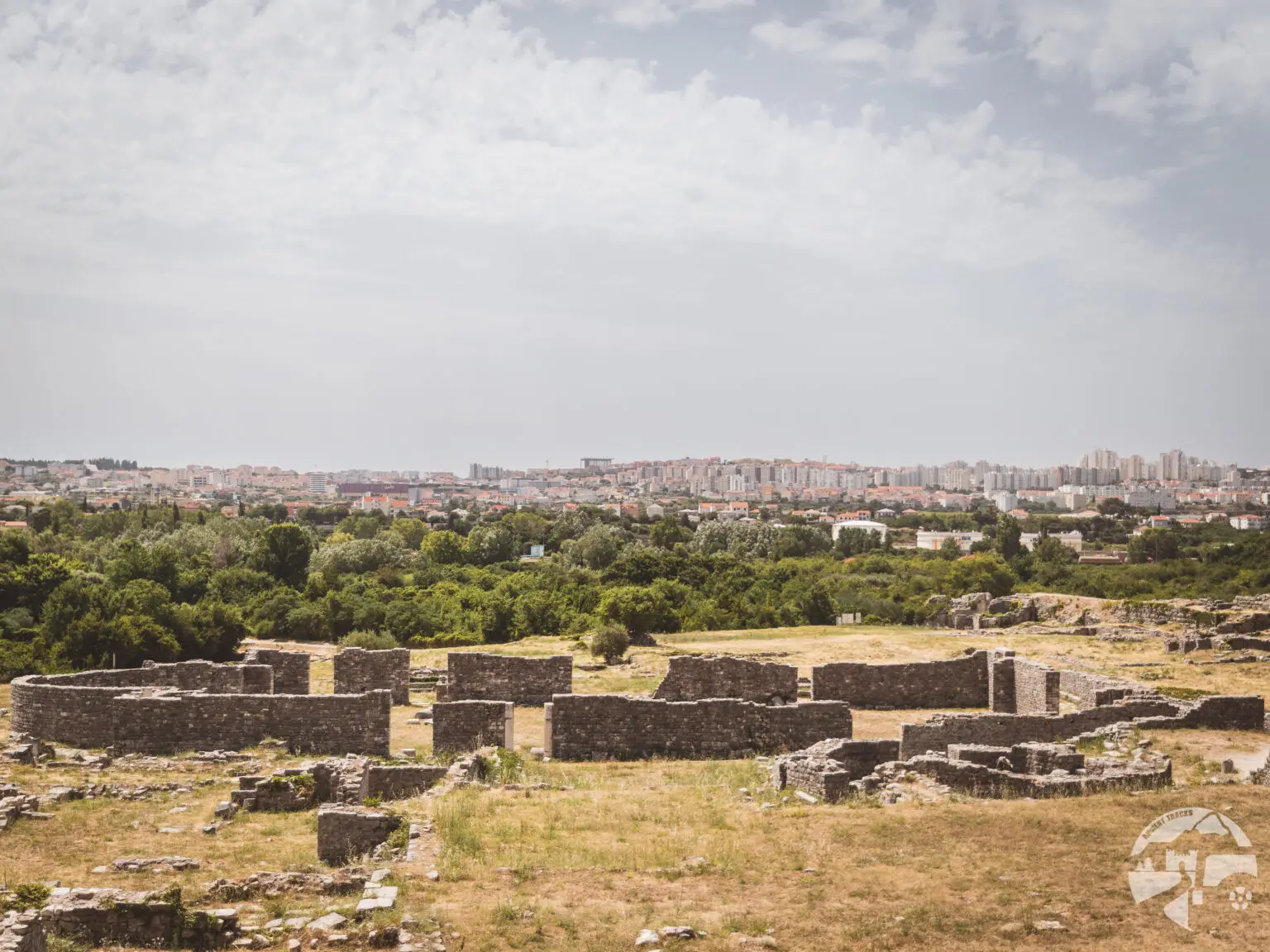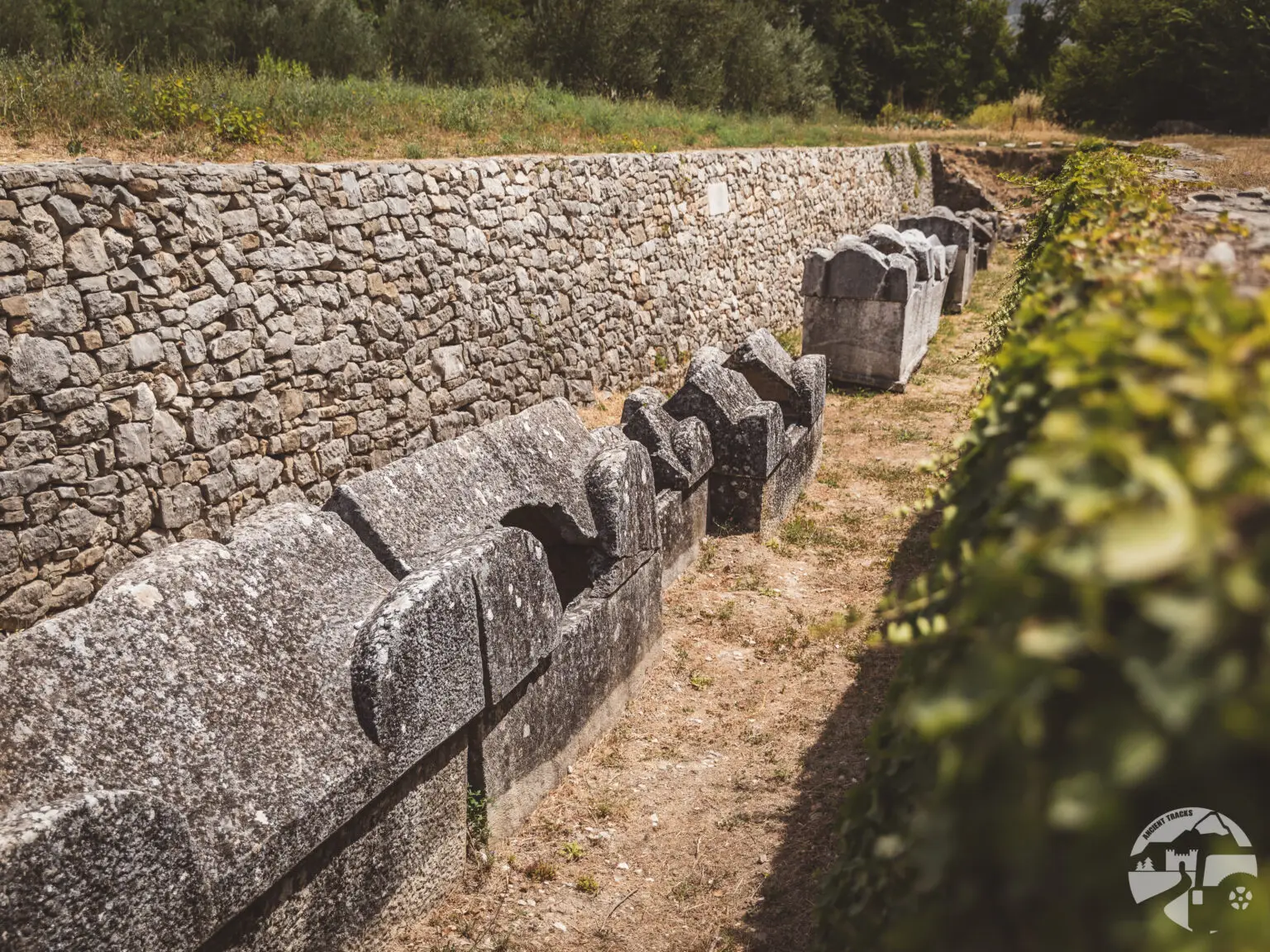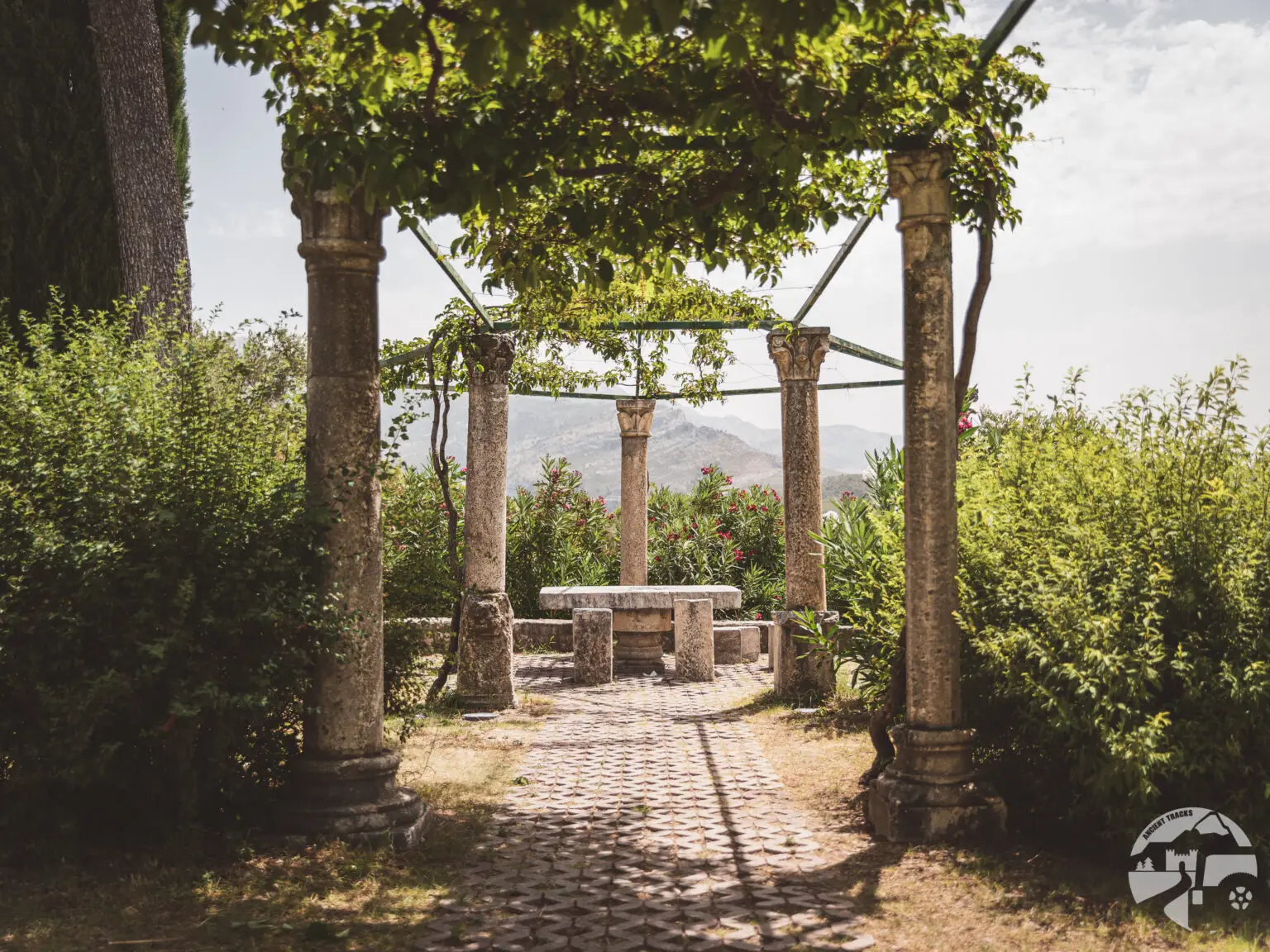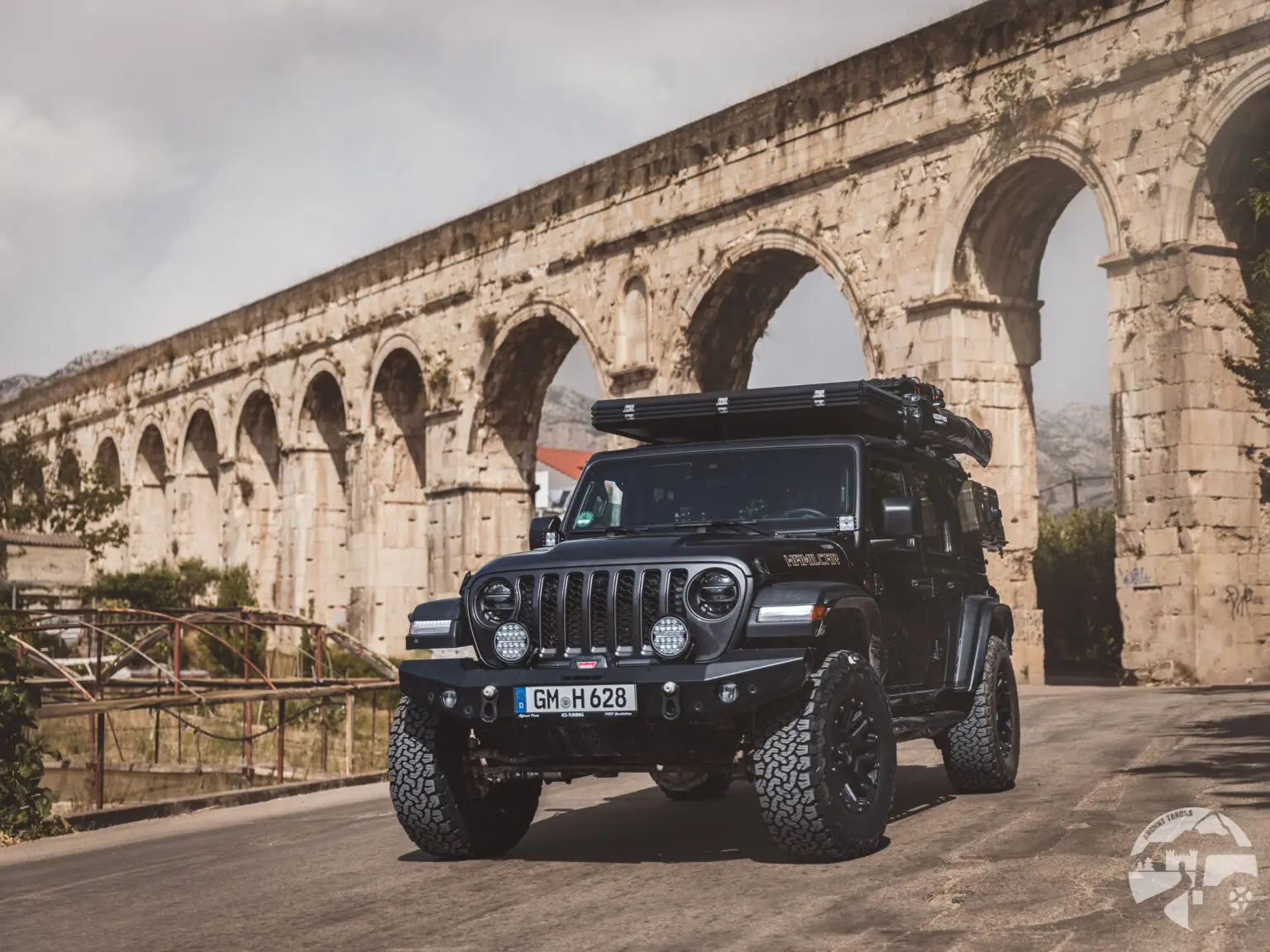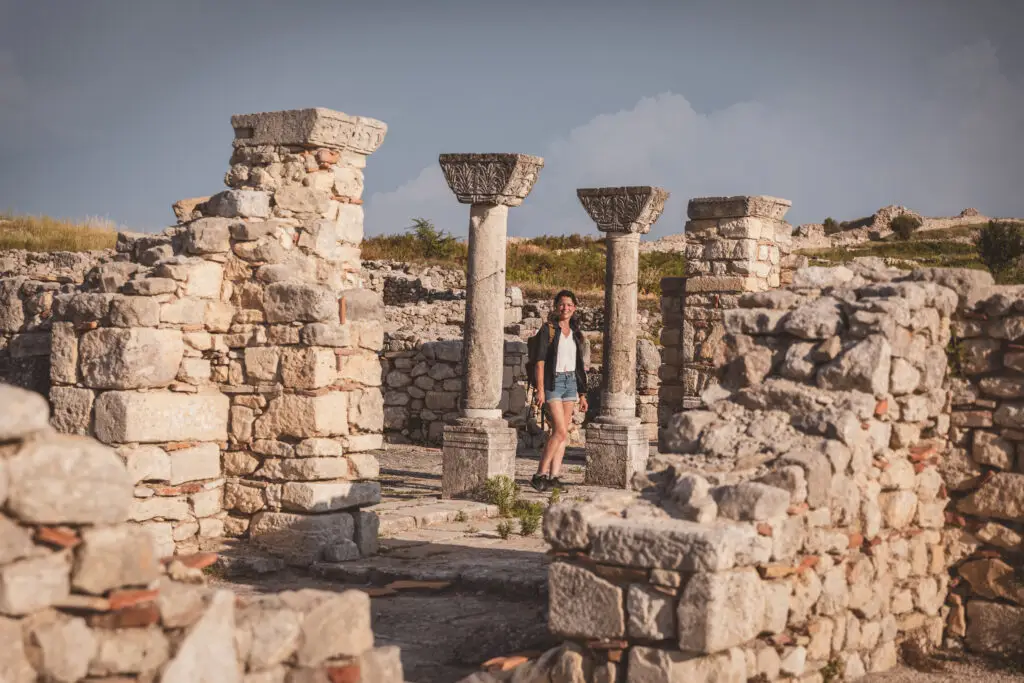
Content
Der Balkan 🇦🇱🇭🇷 // 4. v. chr. - 5. n. chr.
The ancient Balkans were a melting pot of cultures, ranging from Greek colonies to Roman provinces. Byllis was an important Illyrian center, later expanded under Roman rule. Apollonia, founded by the Greeks, was renowned for its education and trade. Salona served as the capital of the Roman province of Dalmatia and was a major commercial hub. All three sites bear witness to the cultural diversity of the region.
Ruins of Apollonia / Albania
Apollonia is one of Albania’s most important ancient sites. The city was founded as early as 588 BC by Greek settlers from Corinth and developed over the centuries into a major political and economic center of Illyria. Within its approximately 4 km long city walls, an estimated 60,000 people once lived. Among the most significant and still visible monuments today are: The Bouleuterion, the assembly hall for the Greek city council; the Odeon, used for musical and cultural events as well as political meetings, with seating for 300 spectators; and the Great Stoa, a kind of covered walkway along the main street, serving as an important gathering place for citizens engaged in philosophical debates and heated discussions.
After an earthquake in the 4th century, the city’s harbor silted up, leading to its gradual abandonment. A monastery was later established on the site, which today functions as a museum.
How to get there?
- Apollonia Archaeological Park on Google Maps,
Coordinates: 40°43’20.4″N 19°28’25.7″E
The Ancient City of Byllis / Albania
Perched on a 523-meter-high hilltop, the ancient city of Byllis was a fortified settlement founded by the Illyrians in the 4th century BC. The city flourished, minted its own coins, and housed impressive structures, including a theater with seating for 7,500 spectators.
From 148 BC onward, Byllis—renamed Colonia Byllidensium—became part of the Roman province of Macedonia and served as an important military outpost.
During Late Antiquity, from 431 AD, Byllis became a bishopric and evidently an important Christian center. Within a 5–10 km radius, the remains of around a dozen early Christian basilicas have been excavated.
In 586 AD, the city was destroyed during a devastating Slavic invasion and was never rebuilt.
Today, visitors can explore the site, admire its stunning location, and enjoy spectacular sunsets!
How to get there?
- Byllis Archaeological Park at Google Maps,
Coordinates: 40°32’32.1″N 19°44’15.4″E
The Roman City of Salona / Croatia
Salona, located near present-day Split, was the capital of the Roman province of Dalmatia.
This powerful political center was founded in the 4th century BC and was home to approximately 60,000 people. According to legend, Salona was the birthplace of Emperor Diocletian. In the 6th century, the city was destroyed by the Avars and Slavs and subsequently abandoned.
Today, visitors can still explore the impressive remains of the city's walls, towers, and gates, as well as the forum with its temples, the amphitheater, and cemeteries containing early Christian martyrs.
As the largest archaeological park in Croatia, Salona offers a peaceful and relaxed alternative to the overcrowded old town of Split during the summer months.
How to get there?
- Solin Roman Ruins on Google Maps,
Coordinates: 43°32’19.3″N 16°28’28.0″E
Used information Sources & Literature:
In addition to Google Maps, Wikipedia & Co., specifically:
- „Die Illyrer„* by Andreas Lippert & Joachim Matzinger / Kohlhammer Verlag
As an Amazon Associate, we earn from qualifying purchases. Some of the links are affiliate links, which we mark with an asterisk (*). If you click on these links and purchase a product, we receive a small commission at no extra cost to you – but it buys us a coffee. We only recommend products that we have personally purchased and tested.
